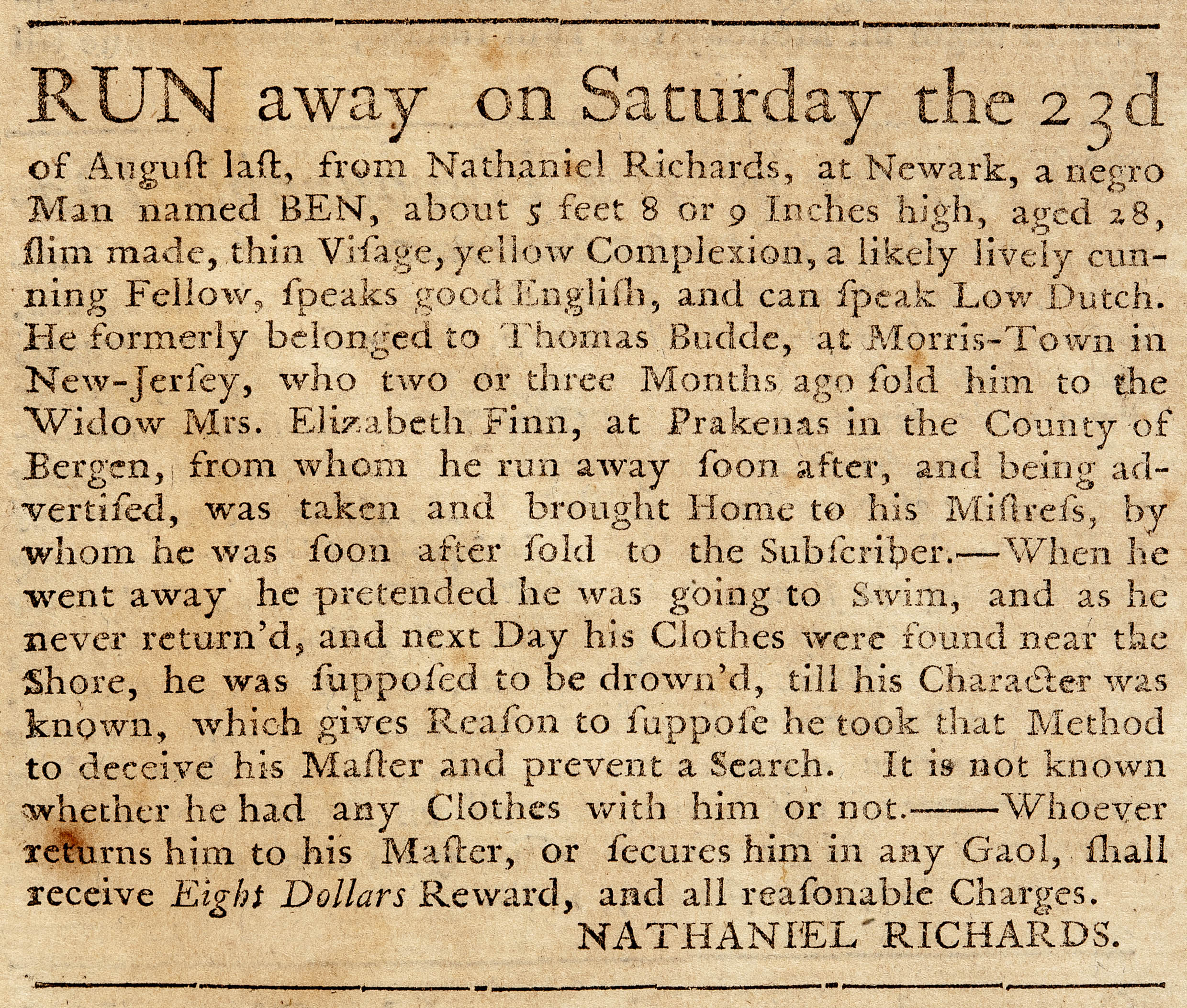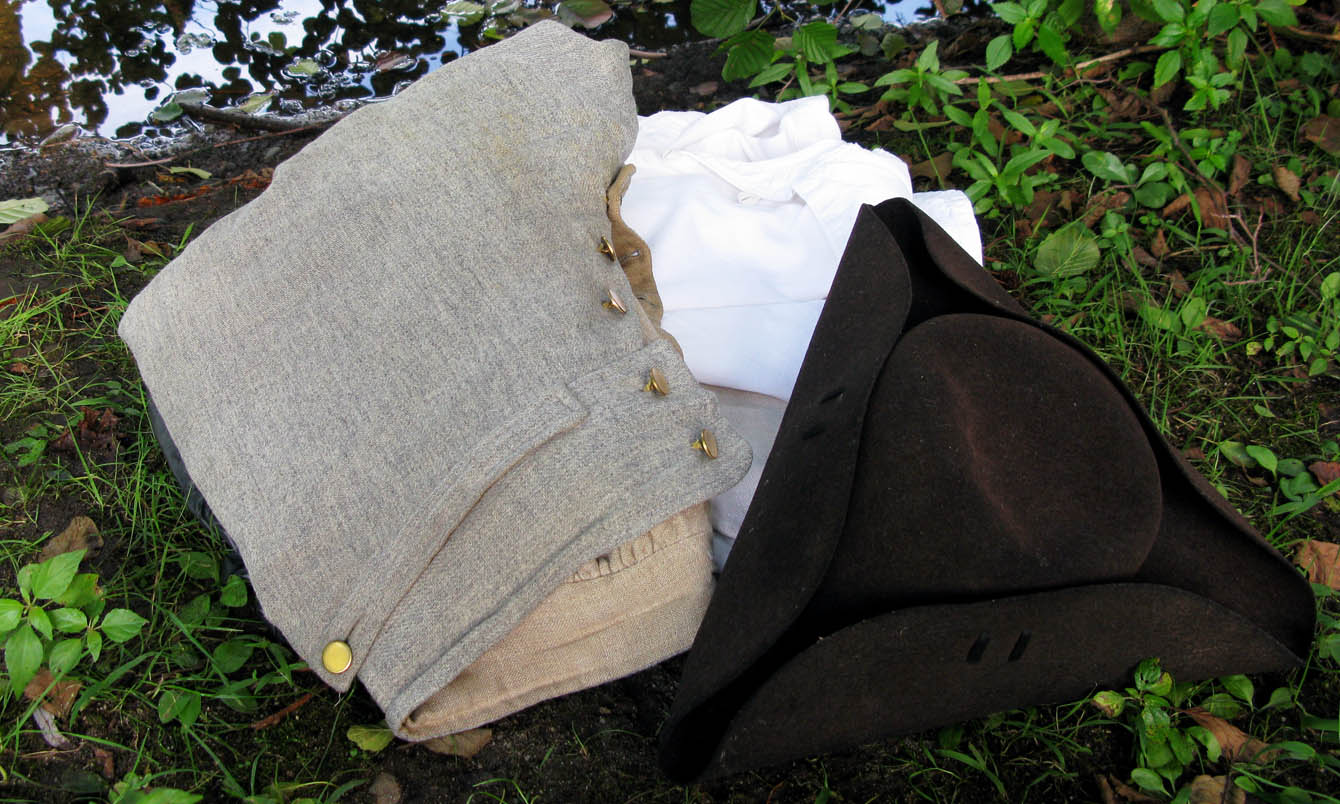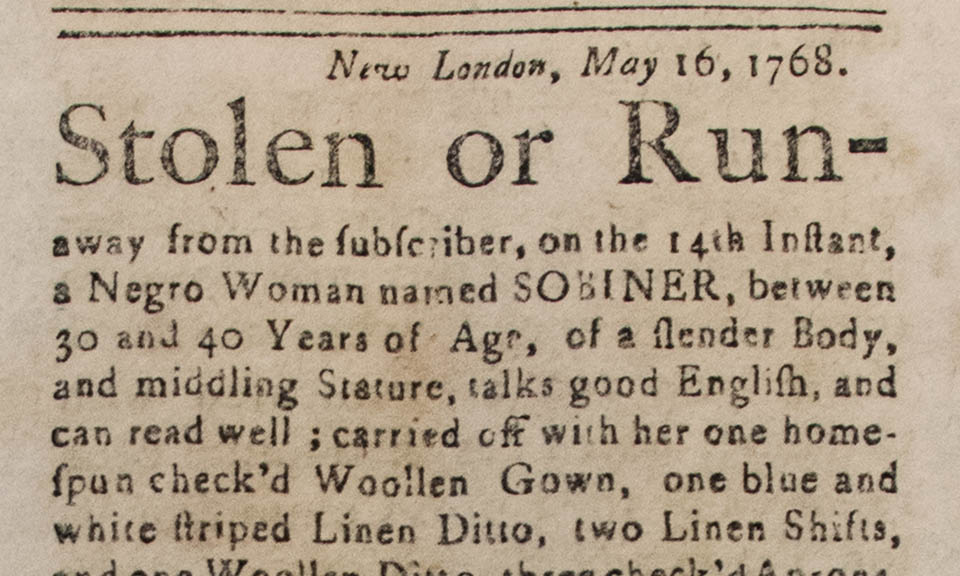Ben: “...Supposed to be Drown’d”
Ben’s story illustrates the planning that was necessary for an enslaved person to escape. By faking his own death, Ben gave himself temporary freedom. Advertisements reveal that Ben fled enslavement no fewer than five times.


A Map of the country round Philadelphia including part of New Jersey, New York, Staten Island, & Long Island
1776
UnknownThis map shows the area of New Jersey where the sale of Cesor, a young enslaved man, took place.
Run away
The advertisement notes that earlier in the year, Ben had run away from his previous enslaver, Elizabeth Finn of Bergen County.
a negro Man named BEN
Nathaniel Richards purchased Ben only a few months prior to this advertisement. In 1766 alone, Ben was enslaved by three different people and was sold twice. Richards names both previous enslavers, as it was possible that Ben would have traveled to either residence to see members of his family.
likely lively cunning Fellow
Richards’ specific physical description of Ben suggests that Richards, like most enslavers, was in close contact with his enslaved laborers.
To Richards, Ben’s “cunning” behavior was a problem. However, Ben’s creativity and determination enabled this and other escapes.
till his Character was known
By pretending to have drowned, Ben delayed the discovery of his flight. The mention of his “Character” suggests that Ben’s enslaver had only recently discovered his history of self-emancipation.

Reproduction garments
20th century
Ben left his clothes on the bank of the river as a ruse during his escape.
Historic Hudson Valley.
any Clothes with him
It was unusual not to list the clothes worn or taken by the person running away. Detailed descriptions of wearable items made spotting or catching the person who ran away easier. Ben’s well-planned escape made for a less effective advertisement.
Ben: “...Supposed to be Drown’d”
RUN away on Saturday the 23d of August last, from Nathaniel Richards at Newark, a negro Man named Ben, about 5 feet 8 or 9 inches high, aged 28, slim made, thin Visage, yellow Complexion, a likely lively cuning Fellow, speaks good English, and can speak Low Dutch. He formerly belonged to Thomas Budde, at Morris-Town in New-Jersey, who two or three Months ago sold him to the Widow Mrs. Elizabeth Finn at Prakenas in the County of Bergen, from whom he run away soon after, and being advertised, was taken and brought Home to his Mistress, by whom he was sold soon after to the Subscriber. —When he went away he pretended that he was going to Swim, and as he never return’d, and next Day his Clothes were found near the Shore, he was supposed to be drown’d, till his Character was known, which gives Reason to suppose he took that Method to deceive his Master and prevent a Search. It is not known whether he had any Clothes with him or not.—Whoever returns him to his Master or secures him in any Gaol, shall receive Eight Dollars Reward, and all reasonable charges.
NATHANIEL RICHARDS.
An advertisement for Ben, a fugitive
September 4, 1766
Unknown
This advertisement appeared in The New-York Gazette.

Reproduction garments
20th century
Ben left his clothes on the bank of the river as a ruse during his escape.
Historic Hudson Valley.
any Clothes with him
It was unusual not to list the clothes worn or taken by the person running away. Detailed descriptions of wearable items made spotting or catching the person who ran away easier. Ben’s well-planned escape made for a less effective advertisement.
To continue please visit People Not Property on a larger screen or horizontal device to fully experience this feature.


